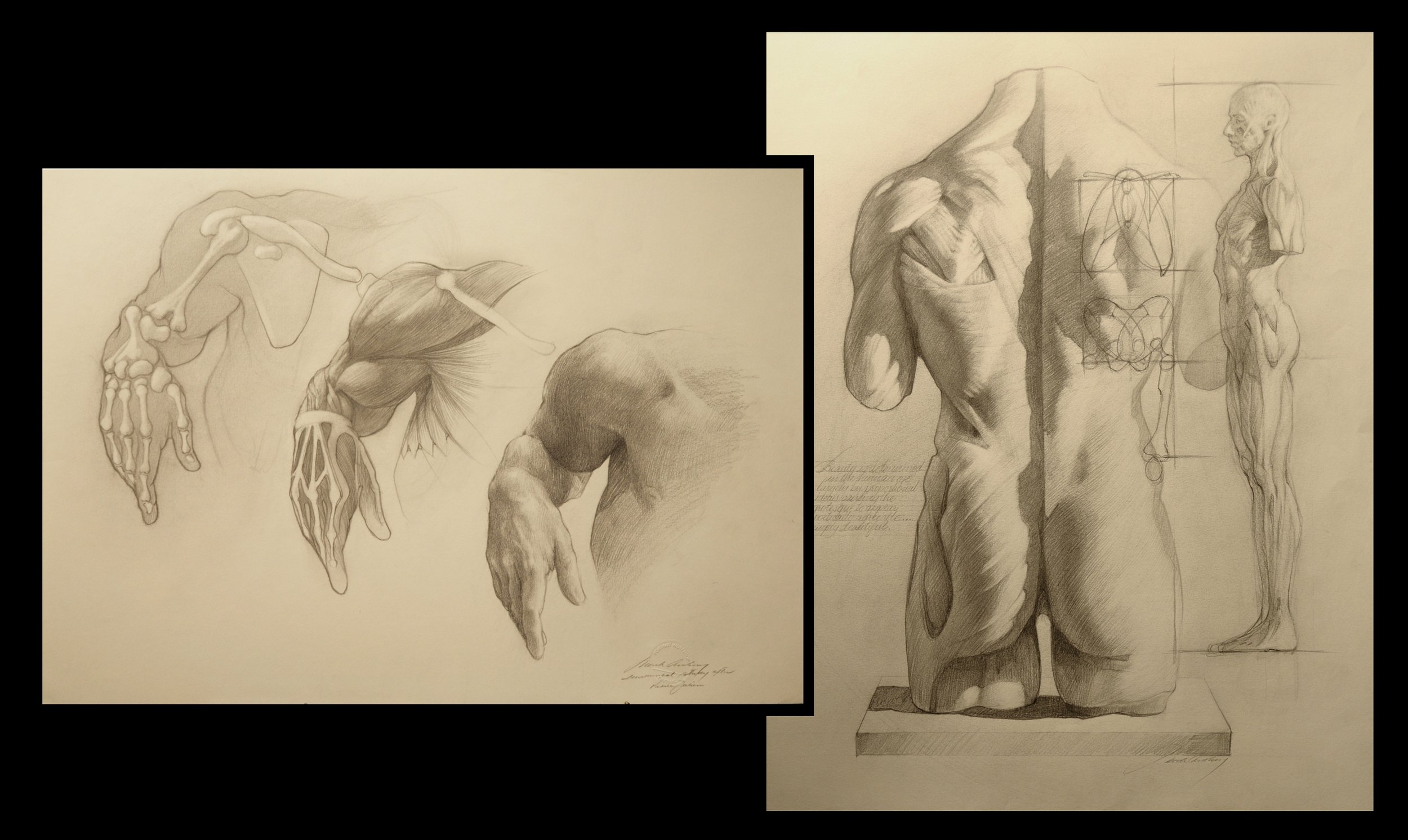Figurative and Anatomical Drawing
KEY FUNDAMENTALS
Ideal Proportions
Structural Anatomy
Surface Anatomy
Gesture Movement and Equilibrium
Renaissance Artists and Great Museum Collections
Head / Body relationship
Hands and Feet
Male and Female Structural Comparisons
Various Ages
Drawing the figure is one of the greatest achievements and human passions in Western Art. This study also emphasizes the difference between a painterly approach and a draftsman’s approach to representation. The treasure for us is a lifetime of creative challenge as we embark on this most time honored discipline of drawing life.
It has been said that you know a master painter by the way he finishes his work. In contrast, you know a master draftsman by the way he executes the beginning stages of his work. What is the difference? A painter often reduces the opening segment of direct painting with simple shapes, edges and values. Then he progressively models detail over top of the underpainting. In contrast, a draftsman is interested in the structural component and will begin by mentally reverse engineering the subject. Closed form and the draftman’s approach found its home in the Renaissance period, while open form and the painterly approach during the Baroque.
We have a natural growth pattern as artists. First, we learn to copy what we see. And, if there is some reasonable resemblance, we call it a successful execution and learning experience. In time, however, we feel advancement is lacking. That is when we begin to explore what is not visible to our physical eyes. A good art program gives the artist the opportunity to open his ‘eyes of understanding’ to fundamental definitions including anatomical analysis, light and form, measuring, proportion, composition, etc., just as our great artistic forefathers did. Eventually, this enhanced understanding merges with our intuitive observation skills and offers power and beauty to our artistic voice. Instead of copying, we are designing, composing, beautifying.
Drawing complex natural figurative subjects exposes us in a raw fashion to all visual disciplines, except for color theory, of course. Some artists comment that drawing is not your friend. If it can expose your flaws, it certainly will! However, that being the case, when it is tamed and subdued into a real sense of control, it can define your grounding as a true modern master, regardless of your preferred medium.
Enjoy what the atelier offers in terms of deep exploration into fundamentals associated with figurative study. Each month features a good helping of this most important discipline.



